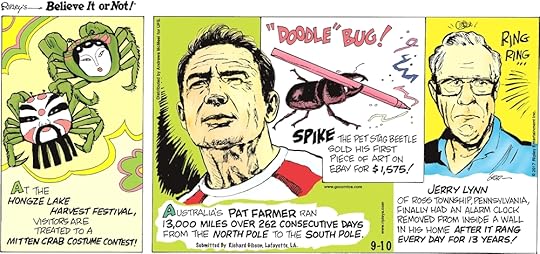Ripley Entertainment Inc.'s Blog, page 390
September 12, 2017
CARTOON 09-12-2017
September 11, 2017
CARTOON 09-11-2017
September 10, 2017
CARTOON 09-10-2017
September 9, 2017
CARTOON 09-09-2017
September 8, 2017
Chickens Evacuate Florida and a 7-Year-Old Finds Excalibur
Featured in Ripley's Believe It or Not!

[September 3-9, 2017] A 7-year-old girl finds Excalibur, chickens evacuate south Florida, we reveal the winner of the Cheetos Museum’s search for the most magnificently shaped corn crisp.
5. Rent a Goldfish
For just €3.50, guests at the Hotel Chrleroi Airport in Belgium can rent some company for the night. They’ll provide you a goldfish in a bowl to keep you from feeling lonely.
My friend is staying in a hotel in Belgium. They’ve offered her the option of renting a fish for the night, in case she’s lonely. #noshit pic.twitter.com/DG74iRSfhY
— Michelle Cooke (@Mich_Cooke) September 2, 2017
4. Girl Finds Excalibur
In the ancient days of Camelot, it is said that the legendary King Arthur Pendragon left his sword, Excalibur, in the Dozmary Pool. This week, 7-year-old Matilda Jones pulled what looked like an ancient sword from the very same body of water. The blade, however, did not live up to expectations. Instead of the legendary sword of the round table, it was just a prop sword from modern times.
South Yorkshire schoolgirl finds sword at legendary beauty spot https://t.co/IlO0gW3UtP pic.twitter.com/g6aC38SBGH
— The Star, Sheffield (@SheffieldStar) September 2, 2017
3. Rooster Burritos Evacuate Florida
Prepping for the impending hurricane, wild chickens from the Florida Keys were photographed wrapped up in newspaper like burritos. They seemed calm, perhaps they know they’re headed somewhere safer.
2. Horse Milk Cocktails
Have you ever tried horse milk? While it’s pretty common in the hills of Kazakhstan, it’s unlikely many Americans have had the mare milk. Believe it or not, horse milk is a lot closer to human milk than cow’s. Mixologist Dimitri Korolev says he prefers to use horse milk because it makes the froth on his drinks softer, and more stable. Would you try a horse-milk cocktail?

#1. The Cheeto’s Museum Winner
The Cheeto’s Museum opened at our New York City Odditorium back in June. The museum showcased Cheetos that looked like all sorts of things, including flamingos and roller bladers. Cheetos™ also ran a contest to find the most interesting shape. A Cheetos unicorn from Isis Sample took home $50,000 for her Cheeto.

Source: Chickens Evacuate Florida and a 7-Year-Old Finds Excalibur
The Current Plight of Clowns
Featured in Ripley's Believe It or Not!

The past couple of years have been hard for clowns, but does that mean it’s time to hang up the red nose and oversized shoes?
It
After 27 years, Stephen King’s haunting clown returns to make a new generation scared of clowns. While the 2016 clown sightings blindsided the clown industry, professional clowns have been dreading the release of It.
Pam Moody, the president of the World Clown Association (WCA), has even prepared press kits for clowns to deal with the movie’s release.
“The character in the movie “IT” should be understood to be a fantasy character – not a true clown.” –from the WCA press release.
Multiple clowns have complained to the WCA about lost gigs caused by the film. They go on to point out that Jason wears a hockey mask, but that hasn’t made people any more afraid of hockey players.
“This is clearly not the act of a professional clown.” –from the WCA press release.
Clown Fears
According to a survey conducted by Vox, 42% of Americans experience some form of coulrophobia: the fear of clowns. That’s more people than said they were afraid of climate change in the same survey.
According to Dr. Dena Rabinowitz, a clinical psychologist specializing in anxiety disorders, the main reason people dislike clowns is the makeup. Clown makeup hides the wearer’s true facial expressions, making people instinctively distrustful. She also says that modern culture has also developed an inherent mistrust of people who are happy all the time, leading them to be suspect of hidden motivations.
Bad Press
Besides already facing a generation of parents who were more terrified of clowns than any generation before, birthday clowning is also on a downturn.
The clown profession has suffered blow after blow in recent years, starting with a series of “Clown Sightings” in 2016.
The Great Clown Scare of 2016
The 2016 clown sighting phenomenon started in Greenville, South Carolina, at the height of summer. Most incidents involved clown sightings in random locations, including near schools, in forests, and in cemeteries.
Over 19 countries were involved in these clown scares, which resulted in threats of organized militias fighting the clown “threat.”
The Clown Motel is for Sale
The Clown Motel sits in the middle of the Nevada desert and has long been a favorite locale for the people at Ripley’s. Opened in 1985, and literally covered from floor to ceiling in clowns, people could pay just $40 a night to stay in this clown-filled motel.
Despite its fame, the owner, Robert Perchetti is looking to sell the clown motel for $900,000.

CC Flickr/Bethany
The Circus Closes
Clowns have been calling the Ringling Brothers Circus home for 146 years, but as of May 21, 2017, the greatest show on Earth ended and took the final destination for clowns with it.
Ringling Bros. actually sponsored a clown college for many years, but shut it down in 1997, taking the training in-house and accepting clowns from other circus schools.
The End of An Era
We reached out to our very own local clowns to get their take on the story and learn how they’ve been affected.
Carl Skenes, one-half of the 20 Penny Circus, pointed out that the American idea of a brightly dressed, kid-friendly clown was born of the tent circus, to begin with. The classical European clown performers share little with these modern iterations. Though some were meant to make people laugh, many were indeed meant to be sad and unnerving. Despite this, he did say the end of the Ringling Brothers was really sad.
“It’s definitely the end of an era.” -Carl Skenes, 20 Penny Circus
Skenes says the 20 Penny act hasn’t been affected at all by the recent bad press surrounding clowns, but that’s because the troupe takes advantage of the scary clown trope. Though they don’t equate themselves with your timeless kid’s entertainment performer, they still pride themselves as entertainment facilitators. Every city and town will have a stable of birthday party performers, but they have to be prepared for the cycles, he says.
“The clown world has to evolve.” -Carl Skenes, 20 Penny Circus
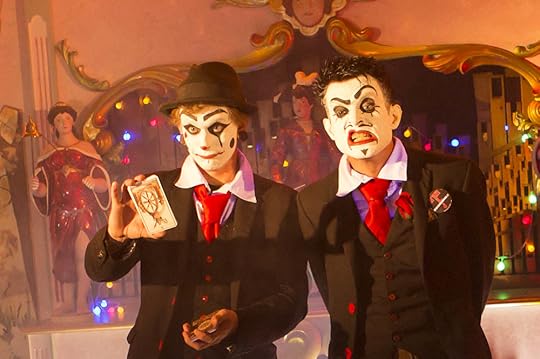
The 20 Penny Circus.
Source: The Current Plight of Clowns
CARTOON 09-08-2017
September 7, 2017
Or Not: Can Cockroaches Survive Nuclear Apocalypse?
Featured in Ripley's Believe It or Not!
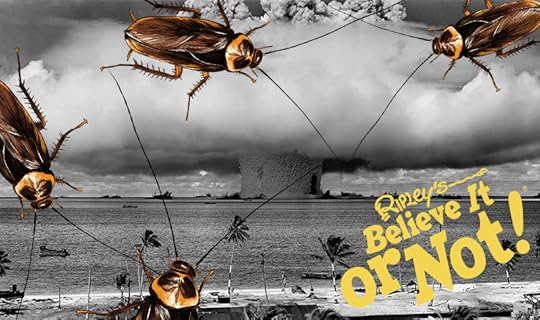
Or Not
In today’s world many misconceptions have been perpetuated—becoming modern day “facts”—when, in reality, myths and hearsay have taken over. Sorry to burst your bubble, but in this weekly column, Ripley’s puts those delusions to the test, turning your world upside down, because you can’t always…Believe It!
Today: Cockroaches & Nuclear Apocalypse
Can Cockroaches Survive Nuclear Apocalypse?
Cockroaches are renown for how hard they are to kill; they’ve even been rumored to be tough enough to survive nuclear armageddon. But is their resilience exaggerated?
Resistance To Physical Trauma
Modern day atomic bombs release the equivalent energy of 15,000 megatons of TNT. That explosion force can be represented as approximately 63,000 petajoules (“peta” meaning add 15 more zeroes) of force.
A cockroach’s exoskeleton can withstand significant force, making them hard to squish. Their exterior frame is made from a series of overlapping plates connected via a stretchy membrane. As they are pressed, they can also distribute weight to each of their six legs to lessen the impact.
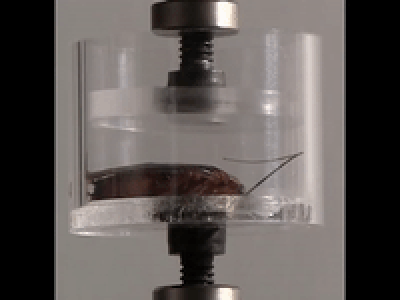
Video from the study.
A study published by the National Academy of Sciences found that cockroaches were able to withstand forces of up to 900 times their body weight, meaning about two pounds. Two pounds is pretty impressive for an organism that has the same weight as a paperclip. To put that in perspective, these sugar loving critters are strong enough to survive the entire weight of a box of one dozen donuts crushing down on them.
Unfortunately, however, two pounds only equals about 0.02 joules of force resistance for the average cockroach. This number pales in comparison to the nuke’s 63,000 petajoules in a head to head confrontation. While the bug loses in a direct match-off, they do earn points for their heightened ability to survive crumbling buildings in the wake of a nuclear detonation, provided they are far enough away from the explosion and have barriers lessening the impact.
Fallout
It’s probably pretty obvious that people don’t mean a roach can withstand the blast from a nuclear device when they say they “can survive a nuclear winter,” but what makes them think the cockroach survives the deadly radiation fallout any better?
Compared to a human, who can withstand about 1,000 rads of radiation, a cockroach can withstand between 5,000-10,000 rads, depending on the variety.
When a nuclear device detonates, it releases nuclear isotopes that are propelled high into the air by the explosion itself. As these particles fall, become carried by the wind, and even contaminate clouds carrying rainwater, poisonous fallout spreads.
Based on mortality rates and estimates by Army physicists, any people within two kilometers of the initial blast site at Hiroshima were exposed to lethal amounts of radiation in the first 48 hours, and were at risk onward depending on how much time they spent in contaminated areas, so it is possible that some roaches would survive the radiation, but many would die.
Modern day nuclear ordinances, however, are much stronger, and often more radioactive, making it unlikely that cockroaches would be able to survive the radiation in any significant way.
What Can Survive Fallout?
There are other insects that were known to have easily withstood the Hiroshima fallout, including the Braconidae wasp, which can withstand 180,000 rads without any damage to their reproductive abilities. Water bears and certain types of bacteria can withstand up to 3,000,000 rads.

Braconidae wasp
CARTOON 09-07-2017
September 6, 2017
Making and Tasting Salt from Human Sweat
Featured in Ripley's Believe It or Not!

Japanese language news blog RocketNews24 made salt from their own reporter’s sweat, and then tasted some human sweat-garnished rice balls!
In Japan and all across south Asia, musubi is a simple and delicious dish where triangular rice balls are filled or topped with almost anything, including salted salmon or other sour ingredients.
To source the seasoning, reporter Mr. Sato brought his preserved perspiration from a sauna visit to the office and wrung it out in a bowl.

Mr. Sato wrings out his sweat towel into a bowl.
After evaporating the liquid in a frying pan, what was left was, as they called it, Sato-sourced sodium! The salt they ended up with was actually an icky yellow, not white like table salt. This was likely due to other impurities in his sweat, including skin cells and bacteria.
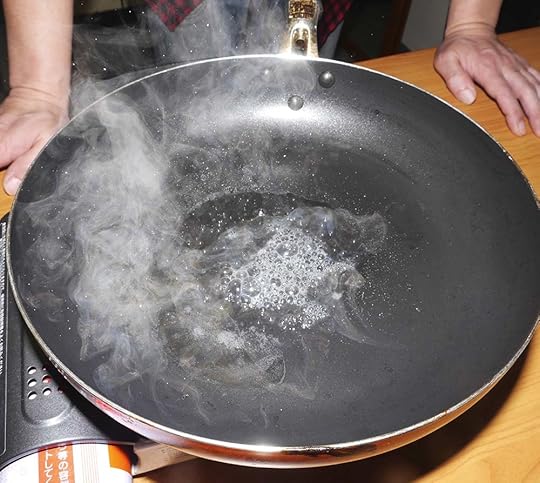

The salt was yellow, not white.
Once the rice balls were formed, Mr. Sato sprinkled his salt on top and tasted his perspiration. Although it tasted like ordinary salt at first, the extremely salty taste and the punishing smell proved too strong.

The human salt-topped musubi.
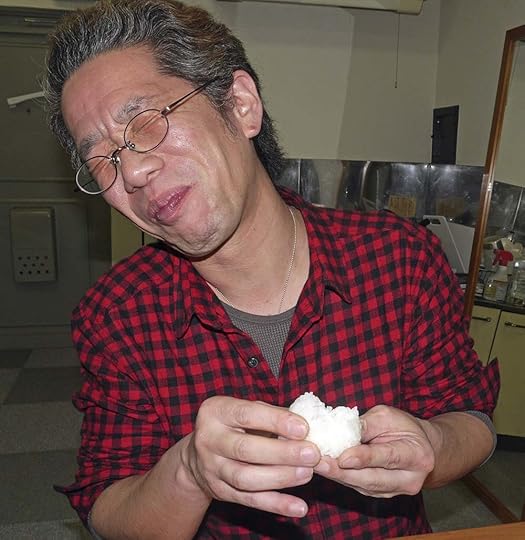
They tasted salty but smelled sweaty.
Sensing You Want More?
Filled with remarkable photos and over 1,500 all new—all true—stories to immerse yourself in, Ripley’s Believe It or Not! Shatter Your Senses! is the newest book in the bestselling series from Ripley Publishing—so incredible you won’t believe your eyes…or ears…or nose!
Spark your senses here, on the blog, weekly for a feature from the 2018 annual, Ripley’s Believe It or Not! Shatter Your Senses! and follow us on social media for a chance to win a copy, among other unbelievable prizes!
Ripley Entertainment Inc.'s Blog
- Ripley Entertainment Inc.'s profile
- 52 followers




